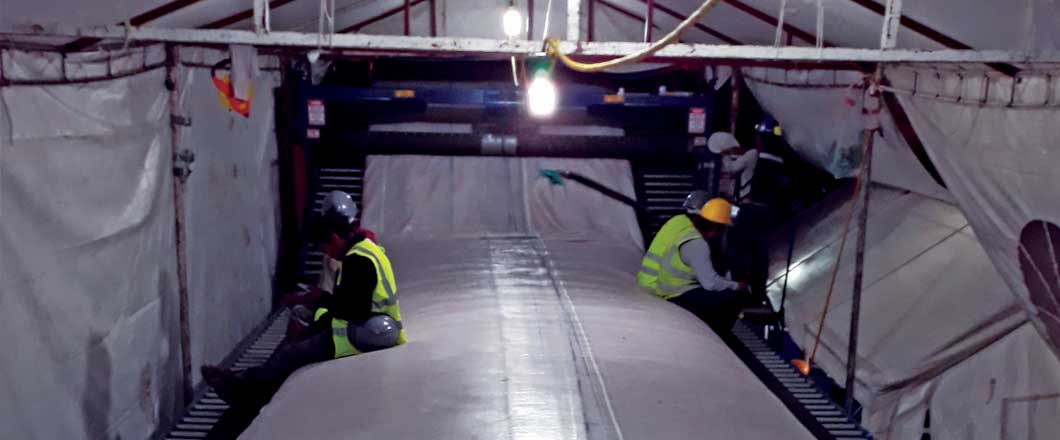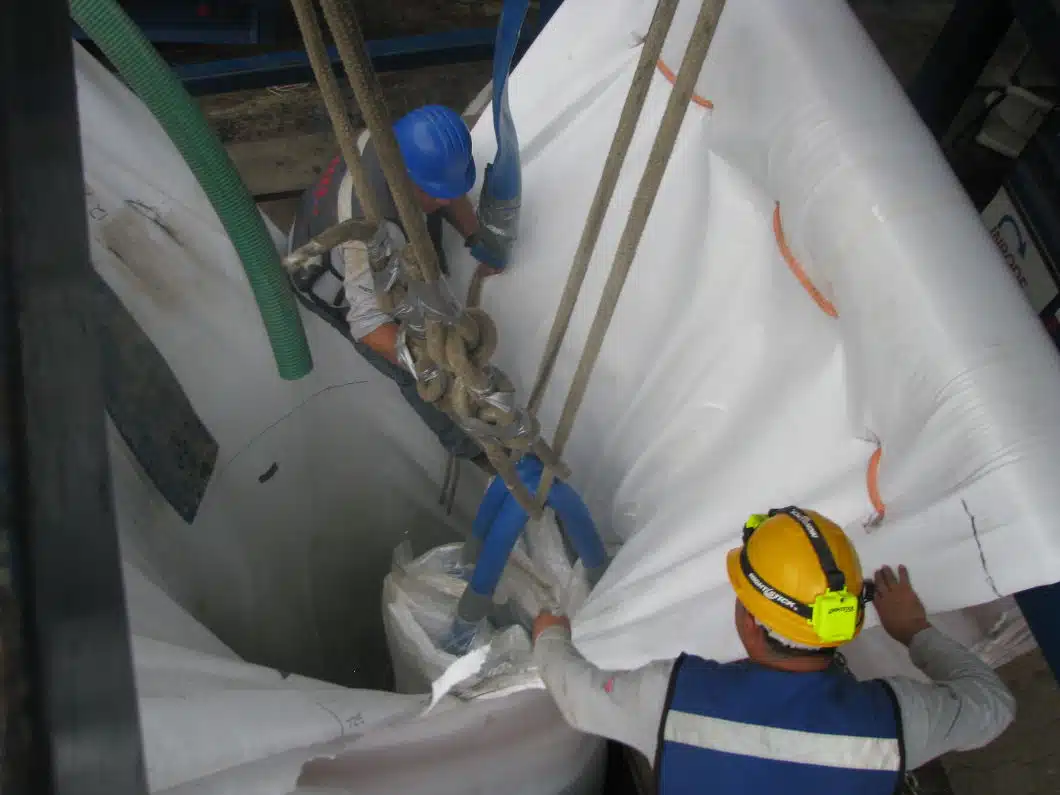
Looking at Resins and the Trenchless Market
Resins. What do we know about them other than being the sticky substance that adheres the liners to the pipe during the cured-in-place pipe (CIPP) process? They are sort of like the silent partner in the process, with the liners and CIPP work grabbing the headlines for this popular rehab method.
The trenchless arena is just one market that resins — polyester, vinyl ester and epoxy — play critical roles in; albeit a growing market for resins manufacturers as the CIPP method continues to resonate and be accepted among utility owners and municipalities. And whether the adhesion is done with steam, hot water, ultra violet (UV) or Light Emitting Diode (LED), resins are a part of the CIPP world.
We spoke with a few of the resin manufacturers and suppliers for their perspective on today’s trenchless and resin market. Our first question was pretty basic: How is the state of the resin market for trenchless applications? A big thumbs up was given by all.
“The resin market continues to be strong, especially for the resins used in trenchless technology,” says Bill Moore, AOC Aliancys product leader for the CIPP market. AOC is a longtime supplier of polyester and vinyl ester resins, gel coats and specialty materials for the composites industry and market leader for the resins used in trenchless rehab projects. “Even during times of recession, when other markets suffer, the trenchless technology market continues to grow because it is vital to infrastructure around the globe. The trenchless technology market is extremely important to [us] and we have a team dedicated solely to product development and technical service for CIPP.”
Jason Schiro is business manager for pipeline remediation polymers at Interplastic and has been involved in the resins industry since the mid-1990s and has experienced the fluctuation of the resins market over the course that time. Interplastic is an industry leader of polyester and vinyl ester resins, gel coats, putties and sheet molding compounds, as well as a leading supplier of materials for the trenchless industry. With the aging and deteriorating underground infrastructure — in North America and worldwide — needing immediate attention, there’s no better time to be in the resins sector, he says.
RELATED: Refurbishing and Strengthening an Aging Highway Culvert with UV Lining

“Trenchless technology systems continue to expand,” says Mark Guard, Composites One market manager-resin and gel coat. Composites One supplies resins, as well as materials throughout the laminate, such as glass, catalyst and core. “High performance materials can be found in everything from pressure pipes to potable water systems, just to name a few. These materials have unmatched adhesion and resistance compared to traditional materials.”
Resins Evolution
When CIPP became part of the trenchless lexicon, water and steam were the methods by which resins were cured to the felt or fiber sleeve. As the trenchless industry grew and matured, the technologies used for the curing process evolved and expanded, and, therefore, so did the resins themselves. But how have they changed?
Schiro notes that over time, the resins have become more specialized and designed for special attributes, most notably in the trenchless markets. “Today’s resin manufacturers offer systems made with special fillers designed to enhance physical properties,” he explains. “They also offer resins based on renewable resources, such as raw materials derived from plants, and several styrene-free systems.
“We have also seen a large push for specialty resins to be used in pressure applications. These higher elongation pressure pipe systems are designed to transfer much of the stress to the reinforcing glass liner, making a stronger overall composite.”
All note that the resin market has seen quite an evolution over the last five to 10 years as the CIPP market has grown exponentially. Non-styrene resins, as well as NSF/ANSI 61 potable water approved resins have been developed. UV and LED cure resins are emerging as growing subsets of the curing process.
RELATED: MCES Uses CIPP for Black Dog Preserve Project
“While still somewhat of an emerging market in North America, there is increasing interest in systems designed for ultraviolet and LED,” Schiro says, “After all, if composite materials are to emerge as the innovative and versatile answer to our country’s aging infrastructure, we must continue to improve their overall cost-effectiveness and ease of installation.”
To that end, he notes that Interplastic Corp. has introduced its latest product, ONEstep, which provides a new and safer way to cure traditional heat-cured CIPP resins.
As diverse and versatile as resins are, the idea that there is one resin out there that is a “one size fits all” product is misguided and uninformed. Resins carry different characteristics and properties. “A common misconception is that all resins are the same,” says Moore. “As CIPP resins become more specialized, they require more sophisticated manufacturing and process control. These unique resins are designed for very specific applications and require superior properties.”
Guard concurs. “Obviously, the main materials — polyester, epoxy, urethane — each have differing characteristics and strengths, depending on the segments needs,” he says, adding “Another misconception is that these materials can’t be cost competitive against traditional materials. But as more and more users look at total life cycle costs, this argument becomes a moot point.”
“In the case of the CIPP market, the resin is typically what is providing all the strength for the rehabilitated line,” Schiro says. “It is, therefore, important to use the appropriate resin for the given application and to also use the system as it was designed.” This includes the appropriate initiator levels, as well as the correct cure rate and time.
Key Issues
Guard notes that among the issues resin makers face is the old-fashioned supply and demand, saying that with end users continuing to accept and use these materials at such a rapid rate, that modest growth will result in an increased demand for the products. “This is something that we need to continue to monitor as an industry.”
Among the issues for the CIPP market that Moore points to are the raw materials pricing, as well as transportation and manufacturing flexibility. “Raw material prices can be extremely volatile and can shift based on a number of economic, political or natural factors that buyers cannot control,” he says, explaining that this can be particularly impactful to CIPP contractors as most projects are bid far in advance of working starting.
RELATED: Tips for Choosing the Right CIPP Liner
Schiro agrees with both Guard and Moore on these issues but adds this one: the labor shortage in construction and finding qualified workers.
As competitive and volatile as the resin industry can be, all three emphasize that today is an exciting time to be a part of the trenchless market as the need for rehabilitating our underground infrastructure grows at an alarmingly fast pace, as more and more aging pipelines reach the end of or are beyond their service lives.
“The resin market for trenchless technology projects will continue to be strong and this is a testament to the contractors and the significant need for the services they provide,” Moore says.
“It’s an exciting time to be involved in resins, especially as they relate to the infrastructure markets,” Schiro says. “People involved in the trenchless markets are very innovative. Their companies continue to develop and evolve new methods for using our resins.”
Sharon M. Bueno is managing editor of Trenchless Technology.





